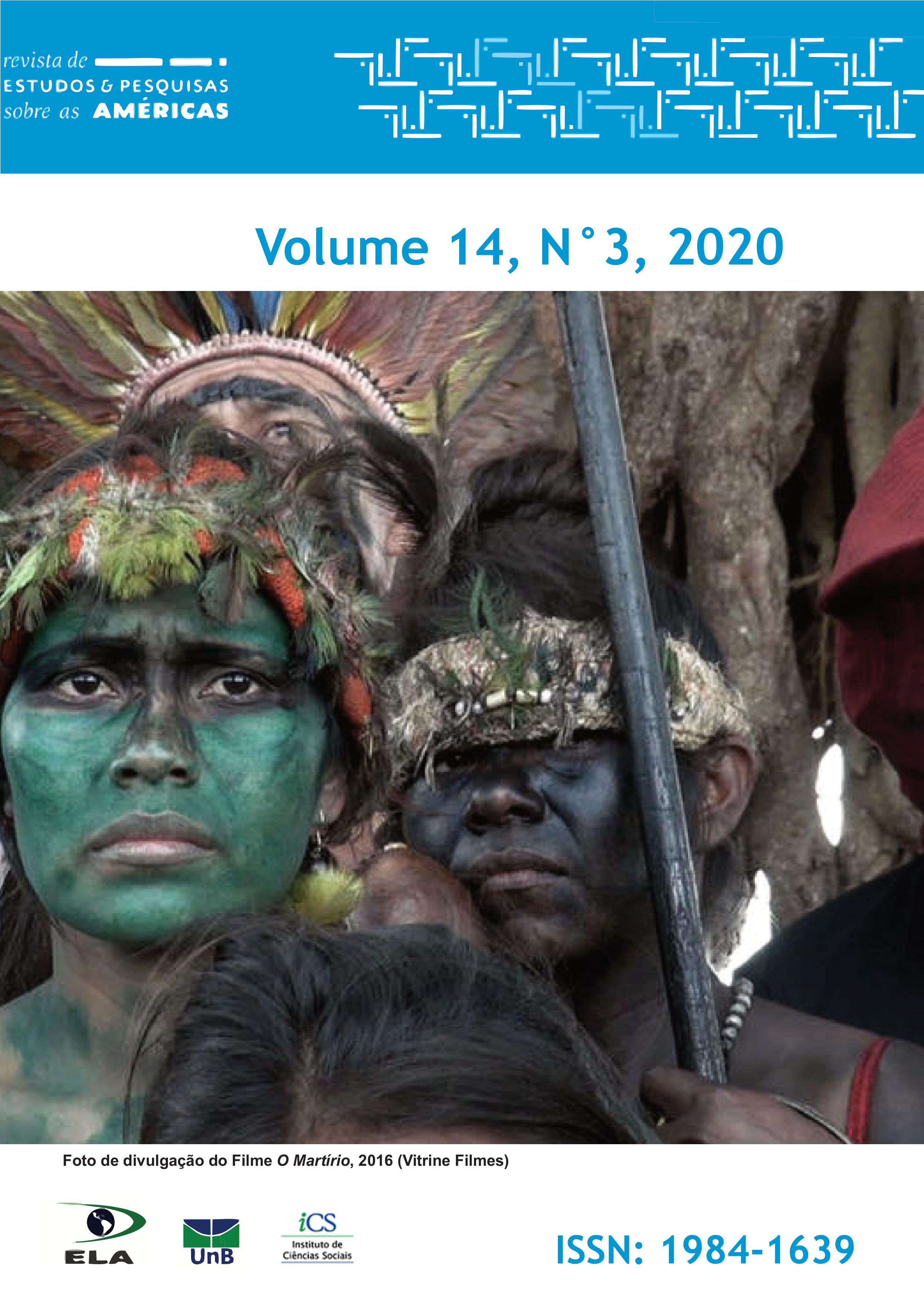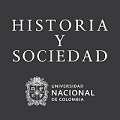Southern Borders and Territorial Transfiguration: genesis and permanence of the stigma of foreigners attributed to the Guarani in Brazil
DOI:
https://doi.org/10.21057/10.21057/repamv14n3.2020.34425Keywords:
Guarani; Foreigners; States; Territory; RightsAbstract
Through this article we will analyze historically how Brazil attributed the stigma of foreigners to Guarani. We found that the employment of this xenophobic category in the twentieth century is triggered at specific times, in general when the Guarani intensify actions for guaranteeing land. However, this same process is not perceived with the same intensity in other cases of cross-border peoples. We note that both the Guarani and the territory they occupied was the object of colonial geopolitical disputes between the Iberian crowns, and between settlers, São Paulo mercenaries and religious of the Society of Jesus. We also identified that, during the 19th century, Brazil exalted the Guarani as the founding hero of the nation, but in its passive, subjugated and voluntarily killed version, to bring about a new nation, white and western. However, this place occupied by the Guarani gradually fades, especially with the Triple Alliance war, when Paraguay is identified as the “Guarani Nation” and, with the end of the war, Brazil definitively abandons the Guarani, whether in the ideal is the duty to protect these people. Guarani will now appear in the anthropological literature as the “integrated Indian”. The Indianist movement also abandoned Guarani and started to consider Tupi and its anthropophagy, the new face of a modern Brazil.
Downloads
References
ALONSO, Ângela. O ocaso do romantismo: a polêmica Nabuco-Alencar. In: SILVA, Aracy Lopes da; GRUPIONI Luís Donizete Benzi (org.) A temática indígena na escola: novos subsídios para professores de 1º e 2º graus. Brasília: MEC/MARI/UNESCO, 1995a.
ALONSO, Ângela, O nacionalismo romântico de José de Alencar. In: SILVA, Aracy Lopes da; GRUPIONI Luís Donizete Benzi (org.) A temática indígena na escola: novos subsídios para professores de 1º e 2º graus. Brasília: MEC/MARI/UNESCO, 1995b.
BESSA FREIRE, José R. Cortem a língua deles: IPHAN e glotodiversidade. 2014. Disponível em: http://taquiprati.com.br/cronica/1116-cortem-a-lingua-deles-o-iphan-e-a-diversidade-de-linguas?reply=23989. Acesso em: 16 de agosto de 2020.
BONOMO, Mariano; ANGRIZANI, Rodrigo C.; APOLINAIRE, E.; NOELLI, Francisco S. A “Model for the Guaraní expansion in the La Plata Basin and littoral zone of southern Brazil”. 356, Quaternary International, 2015, pp. 54 e73.
BRASIL. Justiça Federal. Processo nº 5000651-34.2016.4.04.7017. Guaíra, Paraná.2016.
BRASIL. Justiça Federal. Procedimento Comum Nº 5000836-49.2018.4.04.7002/PR. In: BRASIL: Justiça Federal. Processo 5007585-82.2018.4.04.7002/PR. Foz do Iguaçu, 2018.
BRASIL. AGÊNCIA NACIONAL. A Ponte da Amizade: Brasil - Paraguai. Youtube. 1965. Disponível em: https://www.youtube.com/watch?v=VnyWeEVzg7U. Acesso em 23-09-2020.
BRIGHENTI, Clovis A. Estrangeiros na Própria Terra: Presença Guarani e Estados Nacionais. Chapecó-Florianópolis: Argos/EdUFSC, 2010.
BRUM, Eliane. O chanceler quer apagar a história do Brasil. El Pais, 16 janeiro 2019. Disponível em: https://brasil.elpais.com/brasil/2019/01/16/opinion/1547664512_125565.html?%3Fid_externo_rsoc=FB_BR_CM&fbclid=IwAR3xeR3AZ5daHP0Q2L8UPr9h70Iom_Cxg3x2TgtSsUgNrwULzbX_x-9K2ks. Acesso em: 21-001-2019.
CABEZA DE VACA, Alvar N. Náufragos e comentários. Tradução: Eduardo Bueno. Porto Alegre: (Col. L&PM Pocket, v.155), 1999.
CLASTRES, H. Terra sem mal. O profetismo tupi-guarani. São Paulo: Brasiliense, 1978.
CCNAGUA. Declaração do III Encontro Continental do Povo Guarani. Assunção, Paraguai, 15 a 19 de novembro de 2010.
CCNAGUA. Manifesto do Conselho Continental da Nação Guarani. Tekoa Ka’akupe, Ruiz de Montoya (AR), 25 de setembro de 2015.
CIMI. Campanha pela homologação da Terra Indígena Morro dos Cavalos (SC) é lançada hoje 25/03/2014. Disponível em: https://cimi.org.br/2014/03/35830/ Acesso em: 12-09-2020.
CMG - CADERNO DO MAPA GUARANI CONTINENTAL. Pueblos Guaraníes en Argentina, Bolivia, Brasil y Paraguay. 2016. Campo Grande, MS. Disponível em: <http://pt.calameo.com/read/0051616073a2a906ef0d6>. Acesso em: 02 fev. 2018.
COUTINHO, Leonardo. et al. A farra da antropologia oportunista. São Paulo, Revista Veja, especial, 05/05/2010. p. 154-161. (Artigo em periódico físico).
POST DARELLA, M. D. Ore Roipotayvy Porã: Territorialização Guarani no litoral de Santa Catarina – Brasil. 405 f. Tese (Programa de Estudos Pós-Graduados em Ciências Sociais) –Pontifícia Universidade Católica de São Paulo, São Paulo. 2004.
EDWARD, J. Made in Paraguai: A Funai tenta demarcar área de Santa Catarina para índios paraguaios, enquanto os do Brasil morrem de fome. São Paulo, Revista Veja, Edição 1999 – 14.03.2007.p.56-58 (Artigo em periódico físico)
HALBWACHS, M. A Memória Coletiva. São Paulo: Centauro, 2006.
ISA. Galibi do Oiapoque. Disponível em: https://pib.socioambiental.org/pt/Povo:Galibi_do_Oiapoque. Acesso em 20-09-2020.
KARAI TATAENDY, (Augusto da Silva). Depoimento. In: CTI. Guata Porã/Belo Caminhar. São Paulo: CTI, 2015a.
KARAI TATAENDY (Timoteo Oliveira). Depoimento. In: CTI. Guata Porã/Belo Caminhar. São Paulo: CTI, 2015b.
KARAI JEKUPE (Adriano Morinico). Depoimento. In: CTI. Guata Porã/Belo Caminhar. São Paulo: CTI, 2015.
KÖNIG, Mauri. Grupo contesta reserva indígena: Manifestantes bloqueiam a BR 101 para denunciar “fraude antropológica” na demarcação da área. Jornal Gazeta do Povo. Curitiba, 17-06-2008. p. 27. (Artigo em periódico físico)
LADEIRA, Maria I. O caminhar sob a luz: território Mbya a beira do oceano. São Paulo: Editora UNESP, 2007.
MAGALHÃES, E. (org). Legislação Indigenista Brasileira e normas correlatas 2. Ed. Brasília: Funai/CGDOC, 2003. (Obra completa)
MELIÀ, Bartomeu. Mundo Guarani. Asunción: BID; Ministerio de hacienda. 2011. (Obra completa)
MELIÀ, Bartomeu. A experiência religiosa Guarani. In: MARZAL, Manuel M. O Rosto Índio de Deus. Petrópolis: Vozes, 1988. p. 293-357. (Col. Teologia da Libertação, série VII, v. 1).
MELIÀ, B. A questão da ocupação tradicional. Palestra proferida no Seminário sobre territorialidade guarani. Organização: Conselho Indigenista Missionário e Museu Universitário/Universidade Federal de Santa Catarina. Apoio: Comissão de Apoio aos Povos Indígenas (Florianópolis/SC). Morro das Pedras – Ilha de Santa Catarina. 10 e 11 de setembro de 2001. (Anotações pessoais do autor)
MELIÀ, B.; ett all. O Guarani: Uma bibliografia etnológica. Santo Ângelo: Fundames, 1987.
MONTEIRO, John Manuel. Os Guarani e a história do Brasil meridional
séculos XVI-XVII. In: CUNHA, Manuela C. da. org. História dos Índios no Brasil. São Paulo: Cia da Letra e Secretaria. Municipal da cultura, Fapespe, 1992.
MONTOYA, A. R. Conquista espiritual feita pelos religiosos da Companhia de Jesus nas Províncias do Paraguai, Paraná, Uruguai e Tape. Madri (1639). Tradução Vernácula: Arnaldo Bruxel . Rev. do Texto, apres. e notas: Arthur Rabuske. Porto Alegre: Martins Livreiro Editor, 1985.
NIMUENDAJU UNKEL. As lendas da criação e destruição do mundo como fundamentos da religião dos Apapocúva-Guarani. São Paulo: HUCITEC/EDUSP, 1987.
NOELLI, Francisco S. Silva. Curt Nimuendajú e Alfred Métraux: a invenção da busca da “terra sem mal”. Suplemento Antropológico, Asunción, 34 (2): 123-166, dez.1999. p.123-166. (Artigo em periódico físico)
OLIVEIRA, João Pacheco. Redimensionando a questão indígena no Brasil: uma etnografia das terras indígenas. In: OLIVEIRA, João Pacheco (org.). Indigenismo e Territorialização: Poderes, rotinas e saberes coloniais no Brasil contemporâneo. Rio de Janeiro: Contra Capa, 1998. (Capítulo de livro)
ORTEGA, D.; CARVALHO, E. FERREIRA, P. CARELLI, V. Tava: a casa de Pedra. Youtube. 2012. Disponível em: https://www.youtube.com/watch?v=yF5hUU9AvAc. Acesso em 23-09-2020.
RIBEIRO, Darcy. Os índios e a civilização. Rio de Janeiro: Civilização Brasileira, 1970.
SAGUIER, Rubén Barreiro. Literatura Guaraní del Paraguay. Caracas: Biblioteca Ayacucho, 1980. (Obra completa)
SCHWARCZ, Lilia M. Sobre o autoritarismo brasileiro. São Paulo: Companhia das Letras, 2019.
SUSNIK, Branislava. Los Aborígenes del Paraguay. Etnohistória de los Guaranies. Época colonial. II. Asunción: Museo Etnografico Andres Barbero, 1979-1980.
STERN, Steve J. Resistance rebellion and consciousness in the Andean Peasant World, 18th to 20th. Madison: The University of Wisconsin Press, 1987.
THOMPSON, E.P. A miséria da teoria ou um planetário de erros. Rio de Janeiro: Zahar, 1981.
TOMMASINO, Kimiye. Relatório de identificação e delimitação da Terra Indígena Guarani de Araça’í. Coordenadora e Antropóloga do Grupo Técnico constituído pela Portaria 928 – 06/09/2000. Brasília/DF. Funai/MJ. 2001.
VIVEIROS DE CASTRO, Eduardo. Povos indígenas. Os involuntários da Pátria. 2016. Disponível em: http://www.ihu.unisinos.br/185-noticias/noticias-2016/554056-povos-indigenas-os-involuntarios-da-patria. Acesso em 12-03-2020.
Downloads
Published
How to Cite
Issue
Section
License
Copyright (c) 2021 clovis Antonio Brighenti

This work is licensed under a Creative Commons Attribution-NonCommercial 4.0 International License.
The published material is the property of the Journal, and may be reproduced in whole or in part with indication of the source.
Copyright: Authors will be responsible for obtaining the copyright of the material used. Authors who publish in this journal agree to the following terms:
a)Authors retain the copyright and grant the journal the right of first publication, with the work simultaneously licensed under
the Creative Commons Attribution License which allows the sharing of work with acknowledgment of authorship and initial publication in this journal.
b) Authors are authorized to take additional contracts separately, for non-exclusive distribution of the version of the work published in this journal (eg, publish in institutional repository or as a book chapter), with acknowledgment of authorship and initial publication in this journal.
c) Authors are allowed and encouraged to publish and distribute their work online (eg in institutional repositories or on their personal page) at any point before or during the editorial process, as this can generate productive changes as well as increase the impact and the citation of the published work (See The Effect of Free Access).
















